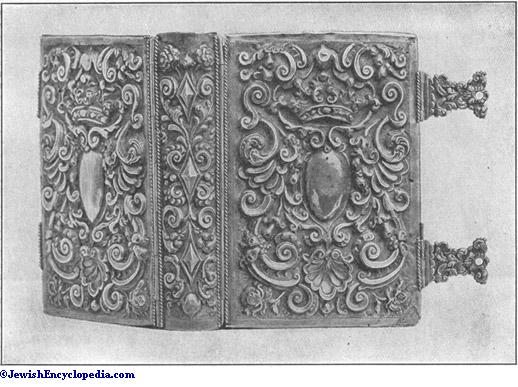BINDING:
(Redirected from BOOK-CLASPS.)By: Joseph Jacobs, A. Freimann
The art of fastening together sheets of paper, leaves of parchment, or folios, and of covering them with parchment, leather, linen, or paste-boards. It was originally practised by the writer of the book. When books were written on scrolls, these were joined together by bands and protected from dust by mantles (see Scroll of the Law). The earliest extant book-covers—those of the Cairo Genizah—are of parchment on both sides, long enough to overlap each other. The back ends in a point, a kind of three-cornered flap, to which ribbons or straps are sewed to tie the volume together. Such bindings are still largely used among the Jews of Yemen. Another kind of binding with overlapping parchment or leather was intended to protect the free edge, and on it the name of the book or the titles of parts of it were often marked. The stitching-thread often goes entirely through the book, making it difficult to open.
After the invention of printing rich owners frequently ornamented Bibles and prayer-books with clasps and mountings of gold and silver, this being especially the case with the prayer-books given by the bridegroom to the bride. To-day the book takes the place of the medieval

- Steinschneider, Vorlesungen über die Kunde Hebr. Handschriften, deren Sammlungen und Verzeichnisse, p. 33, Leipsic, 1897.
